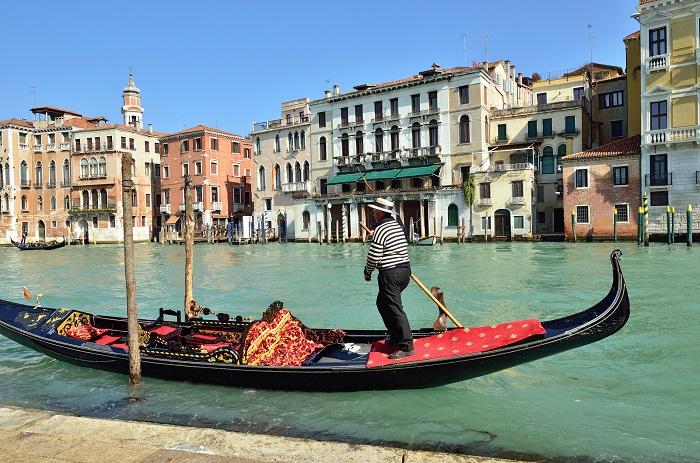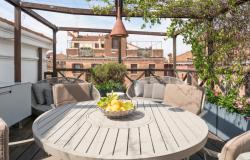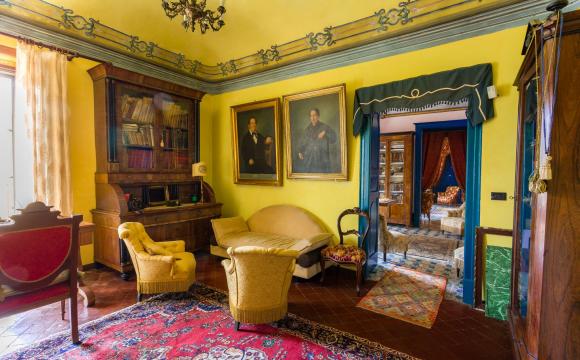Venice is a city that goes under many aliases. The City Of Love. The City Of Canals. Queen Of The Adriatic... The list goes on, but Venice can also lay claim to being the city that everyone wants to come to see. A recent set of figures reported that on average, 50,000 tourists from across the globe come to see the wonders that Venice has to offer every day.
It's that sense of wonder that Venice offers in spades. Books, films and TV alone have depicted Venice as the beautiful city that everyone wants to visit. Men in gondolas wax lyrical about a well known ice cream brand to the tune of O Sole Mio. Fictional heroes such as Indiana Jones or James Bond come to Venice, whether they're on the trail of the Holy Grail or an enigmatic spaceship (not to mention warding off the unwelcome room service of evil Bond baddie Rosa Klebb in a Venetian hotel). It's also the home of historical icons such as Marco Polo or Giacomo Casanova.
So what makes Venice stand out? The Grand Canal? The superlative and detailed architecture? The many festivals? All of these and more, and this month alone sees the return of the popular contemporary art exhibition, the Venice Biennale. 2015 will witness the 56th edition of this acclaimed event (it takes place every alternate year) which dates all the way back to 1895.
Originally, the event was conceived as an Italian art exhibition to celebrate the silver anniversary of King Umberto I and Queen Margherita di Savoia. While it was originally designed to solely showcase Italian art, as the years went on, the exhibition welcomed international artists. Already, by 1910, the event had displayed works of art by the likes of Klimt and Renoir – today, it's one of the most important art exhibitions in the world for all international artists. This year, the event runs from 9th May to 22nd November, and will feature the finest works of art at the Giardini, the Arsenale and at various locations in Venice.
Another event that draws visitors like moths to a flame is also known as “The party most delicious in the world”. The Venice Carnival offers visitors the ultimate party experience with lashings of spectacle, colour and memorable spectacle – and of course, plenty of masks! Originally, the Venice Carnival began in 1162 in the wake of victory of the Serenissima Repubblica against the Patriarch of Aquileia, Ulrico di Treven. After this, the carnival became an official fixture, occurring in the Renaissance and Baroque ages and hitting its peak in the 18th century. However, during the reign of the King of Austria, the event was banned – only to occur from time to time in the following century. It wasn't until 1979 that the Carnival became a regular event, with worldwide acclaim and appeal.
But let's travel back from 1979 right back to the first days of Venice. The extant evidence indicates that the original Venetian population comprised Roman refugees who were fleeing invasions from the Germans and the Huns – they came from places such as Padua, Treviso and Altino to escape from the clutches of the invaders. The traditional founding of Venice is said to be on 25th March 421, linking with the dedication of the first church, San Giacomo at the isle of Rialto. The city of Venice has six neighbourhoods (sestieri): Cannaregio, San Polo, Dorsoduro, Santa Croce, San Marco and Castello.
One of the most unique aspects of Venice is its canals. Indeed, the canals of Venice function as roads, with the city said to be the largest urban car-free area in Europe. Getting about by water is the ultimate antidote to the stuffy bus or over-crowded, delayed train, and in Venice, there are a variety of water transport options. One of the most common is the water bus which ferries people between the city's islands. A recent addition to the water public transport system is the Venice People Mover which was introduced five years ago. The People Mover links Piazzale Roma with Tronchetto Island.
For the more traditional boating experience, the Sandolo is a flat-bottomed rowing boat – while the Gondola remains a constant and popular presence on the water. The Traghetti is a ferry for passengers crossing the Grand Canal. But for more special occasions such as weddings and ceremonies, the traditional Gondola is guaranteed to make an appearance.
The Grand Canal itself is one of the most well known aspects of Venice. It's a perfect opportunity for both locals and tourists to explore some stunning examples of architecture. There are more than 170 buildings to be seen on the banks, which date between the 13th and 18th centuries, including the Basilica of Santa Maria della Salute, Palazzo Dario and Palazzo Barbango. It's also the setting for two of Venice's key events: September's Historical Regatta and November's Feast Day of the Madonna della Salute.
Stay tuned for Part 2 of our brief guide to Venice.














